
Ken McQueen, National Rock Garden Steering Committee
Published in the National Rock Garden Newsletter No. 25, May 2023
The Moruya Tonalite (generally known as the Moruya granite) has been widely used as an ornamental and monumental stone, as well as for building and construction. The ‘grey granite’ is best known as the rock used to face the pylons of the Sydney Harbour Bridge in the early 1930s, but the rock has a much longer history of use. Local to Moruya, the granite was used extensively to construct breakwaters and training walls on the Moruya River. Master Pilot John Ross was the first to recognise its potential for wider application and in 1866 he suggested the granite could be used to pave the streets of Sydney to reduce erosion. Ross noted ‘I do not think it is generally known that the banks of the Moruya River abound with granite of the finest quality, very easy of access… the citizens of Sydney may be pleased to know that there is an abundant supply of this stone so necessary for their streets and public buildings so easy to be got, and so near at hand.’ (Ross, 1866). Ross also sent samples of the granite to the Colonial Architect (Jurmann, 2019). Very little Moruya granite appears to have been used to pave the streets of Sydney, but it was used in many public buildings and monuments in Sydney and beyond.
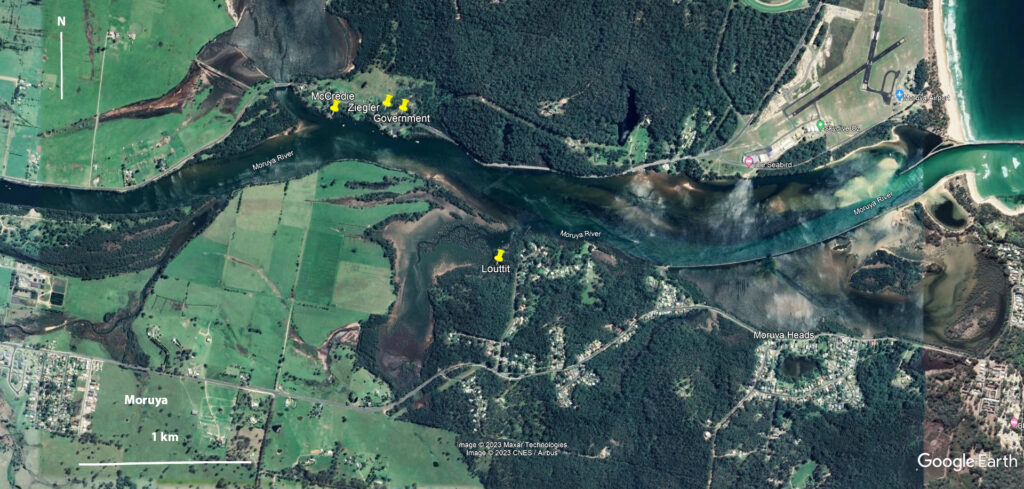
Multiple quarries were developed close to the Moruya River to supply stone over a long history of quarrying. The river provided convenient access for transport by coastal shipping. The first quarry was established around 1861 by Scottish brothers Joseph and John Louttit. The Louttit Quarry was located on the south bank of the Moruya River 2.6 km upstream from the river mouth. Initially rock was supplied for breakwaters and walls along the river. In 1867, John Young won the contract to complete a part of the masonry work for the new General Post Office in George Street, Sydney. To provide suitable granite for columns he took out a seven-year lease on the Louttit Quarry. To make the Moruya granite columns for the GPO, steam powered lathes and other machinery were introduced in Australia for the first time. The GPO was officially opened in 1874 and at the time was considered the finest buildings in Sydney. During this period Young also supplied Moruya some granite columns from the Louttit quarry for Saint Mary’s Cathedral in Sydney.
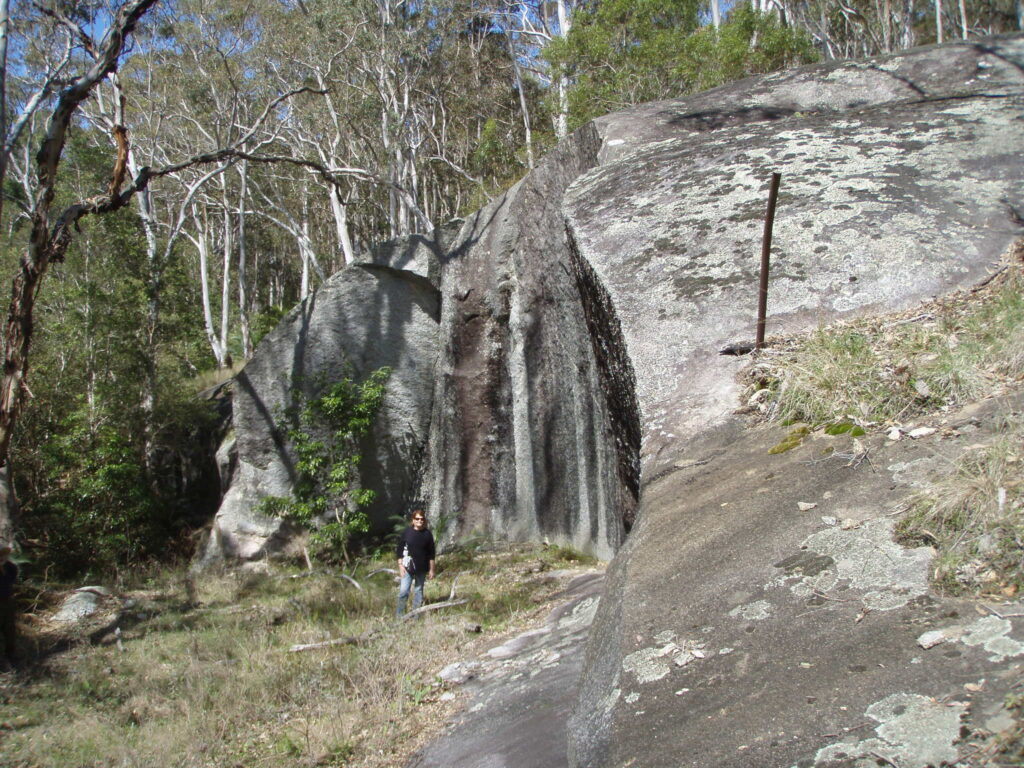
In 1868 it was decided to construct a statue in honour of Captain James Cook, to be placed in Hyde Park, Sydney. Moruya granite blocks for the statue pedestal were provided from the Louttit Quarry. After much difficulty and adventure these blocks arrived on site in 1869 and the pedestal was erected, but it was another ten years before the statue was added (Jurmann, 2019). When Young’s lease expired in 1874 the Louttit brothers continued operating the quarry, supplying stone for buildings in Moruya, including the Bank of New South Wales building in Vulcan Street. The Louttit Quarry operated until 1895 (Gibson et al., 2010).
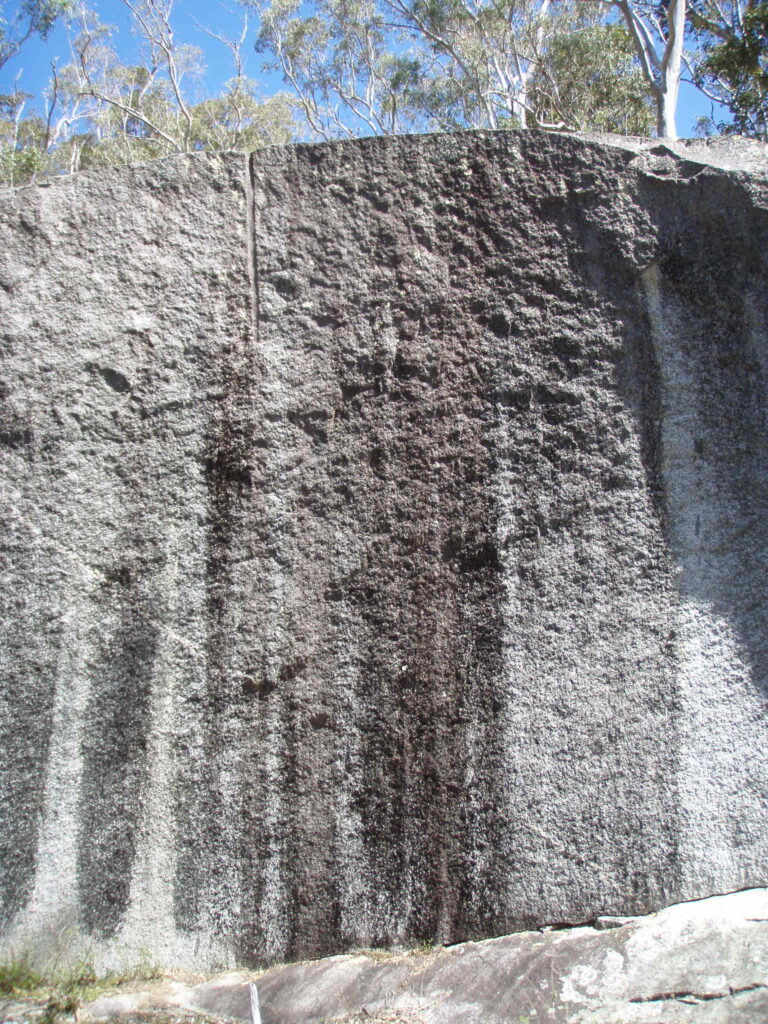
The Ziegler Quarry was established on the northern bank of the Moruya River at Pompey Point by Henry Ziegler and his father-in-law Joseph Ard in 1864. Ziegler, a monumental mason, was born in Prussia and migrated to Australia in 1860, settling at Moruya around 1863. The Ziegler Quarry supplied monumental masonry but also building stone. At least three major buildings in Moruya were built with granite supplied by Zieglers, including the Wesleyan (now Uniting) Church, the Anglican rectory and the Roman Catholic Church. The quarry also produced some columns for Saint Mary’s Cathedral in Sydney and in the early 1880s supplied 30,000 tons of ‘stone cube’ sets for the Government tramway (Gibson et al., 2010). Most of Henry Ziegler’s sons went into the monumental mason business and in later years focussed on monumental work, particularly headstones, including the monument over the grave of Archdeacon D’Arcy in front of St Bede’s Catholic Church in Braidwood (Jurmann, 2019).
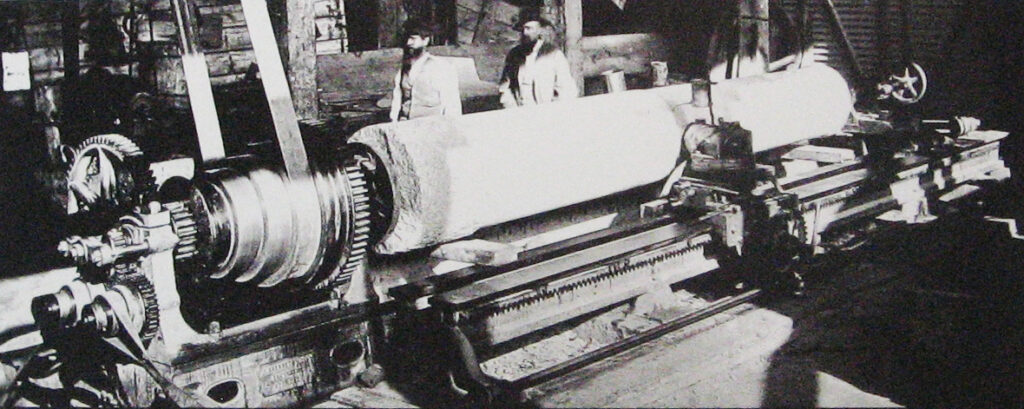
The McCredie Quarry, located further up the river from the Ziegler Quarry, was set up by Arthur and George McCredie of McCredie Brothers, architects, engineers and builders. In 1882 it was decided to extend the General Post Office building in Sydney to its second stage and McCredie Bros were engaged for the project. The extension included a colonnade of columns, and it was decided to use Moruya granite to match the columns in the other parts of the building. The McCredies purchased three acres of land at Pompey Point specifically to quarry the granite. On completion of the second stage of the GPO the McCredie Quarry supplied stone for the pedestal of the Queen Victoria statue in Sydney. This pedestal was erected in High Street between St James Church and Hyde Park in anticipation of moving the Queen Victoria statue from the Garden Palace to a new site. Before the move could be made, the Garden Palace and statue were destroyed on 22 September 1882 in a disastrous fire. The pedestal, like that for the Captain Cook statue, stood vacant for many years before a replacement Queen Victoria could be sculpted and enthroned (Jurmann, 2019). When the McCredie Bros constructed the Chief Secretary’s Building in Macquarie Street, they incorporated Moruya granite columns in the entrance and twenty-five columns on the upper floor. They also included twenty Moruya granite columns on the ground floor of the Burns Philp Building.
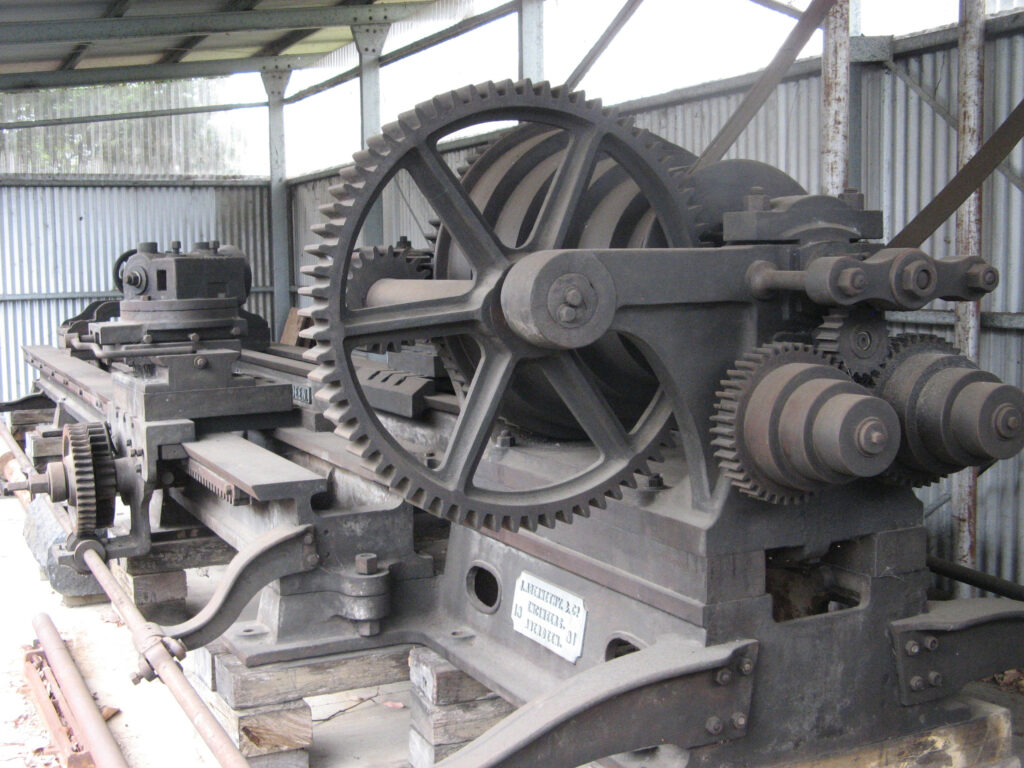
The Government Quarry, also known as Dorman Long & Co. Quarry and the Public Works Department (PWD) Quarry, became the largest of the quarries at Moruya. A small Government quarry was established east of the Ziegler Quarry at Pompey Point in 1875 to supply granite for the breakwater at the north head of the Moruya River via a tramway. Between 1876 and 1885 rock from the quarry was used to build the breakwater. Following several serious accidents work ceased at the quarry in 1885 for many years, however it was later used up until 1924 to supply rock for training walls and riverbank protection (Gibson et al., 2010).
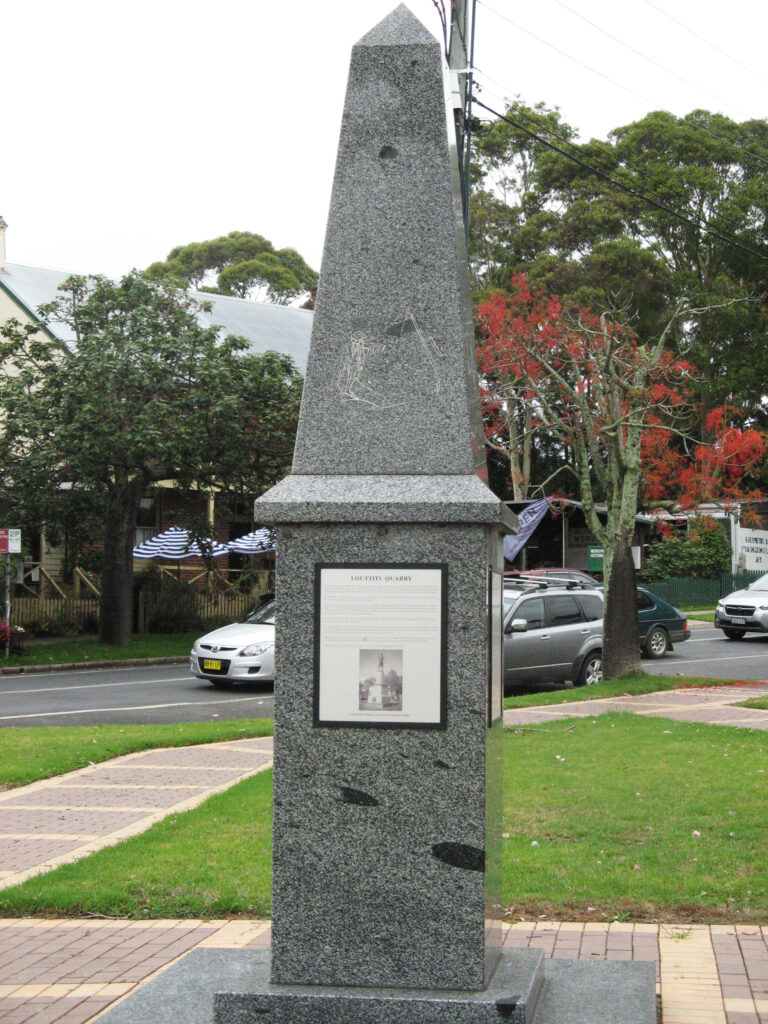
In July 1923, Dorman Long and Co. Ltd won the contract to build the Sydney Harbour Bridge and began looking for suitable material to face the piers and pylons of the new bridge. Moruya granite was chosen because of its well-known quality, plentiful supply and ready access next to the Moruya River for loading onto boats. The company appointed a Scot, John Gilmore as the quarry manager and he arrived in Moruya in November 1924. Preparatory work began at the site of the Government Quarry, including construction of a new wharf. In May 1925, Dorman Long & Co purchased a larger area of land for the quarry for £1,200 and the work of quarrying, shaping and finishing the panels for the bridge began in earnest (Gibson et al., 2010).
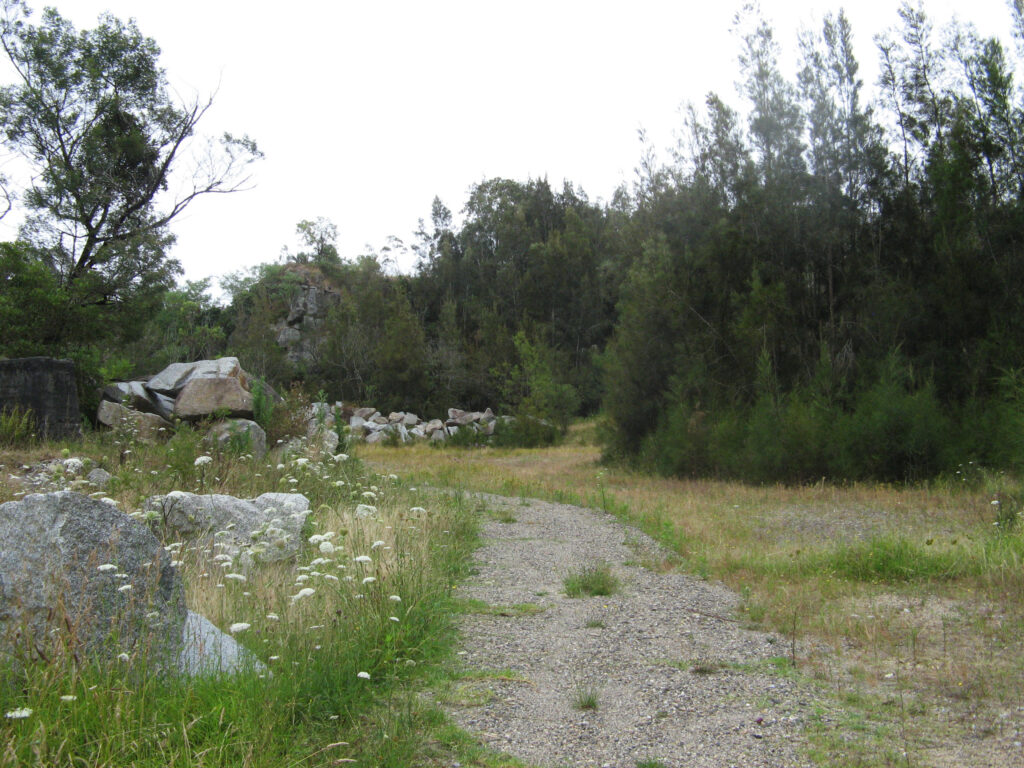
John Gilmore sought masons and quarry workers to complete the large project at Moruya, ultimately employing over 200 of 13 different nationalities, including a large number from Scotland and Italy. To house the workers and their families, a small township called Granite Town was constructed just northwest of the quarry, with a school, co-operative general store, post office and public hall. Many single men lived in barracks closer to the river. The total population fluctuated with the work requirements, but in March 1927 it was 304 (Gibson et al., 2010).
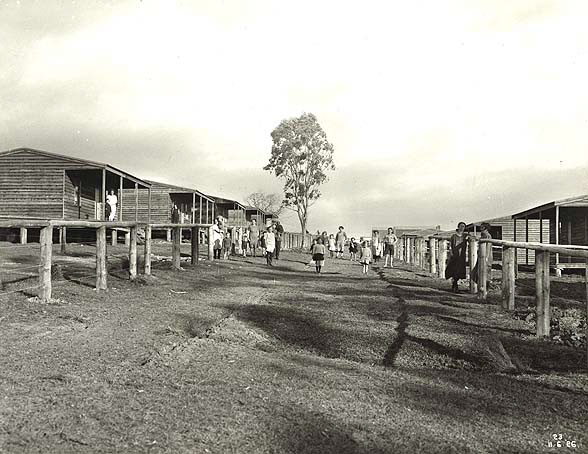
Work on the Sydney Harbour Bridge project continued until early 1932. The quarry was then closed and all the moveable equipment and infrastructure from the quarry, work sheds and Granite Town were sold. Some of the workers moved to Moruya. The large project had been a significant industry and support for Moruya, particularly during the early years of the Great Depression. Over the seven years of quarrying, 173,000 blocks of granite were produced to face the piers and pylons of the Sydney Harbour Bridge as well as 152,910 cubic m of crushed stone. Although focus was on the bridge work, at least four other jobs of a monumental nature were completed during this period. These included the Cenotaph for Martin Place in Sydney, a pedestal for a statue at St. Mary’s convent, Moruya, a war memorial for the town of Araluen and the Dorman Long & Co memorial in St. Michael’s, Vaucluse erected by Lawrence Ennis, Director of Construction for the Bridge (Gibson et al., 2010; Yuin Moruya Community).
After the quarry closed its ownership reverted to the NSW Public Works Department and it lay idle until 1947 when it was re-opened to carry out further works on the breakwater and training walls of the Moruya River. The wharf had to be reconstructed and a new tramway laid. This work finally ceased in 1954 and since then the quarry has been worked very intermittently on an as needs basis to the present (Gibson et al., 2010).
The quarries and site of Granite Town were nominated as a significant engineering heritage site in 2010. The Historic Quarry Park was constructed over the area of the former masonry works at the Government Quarry and officially opened in 2017.
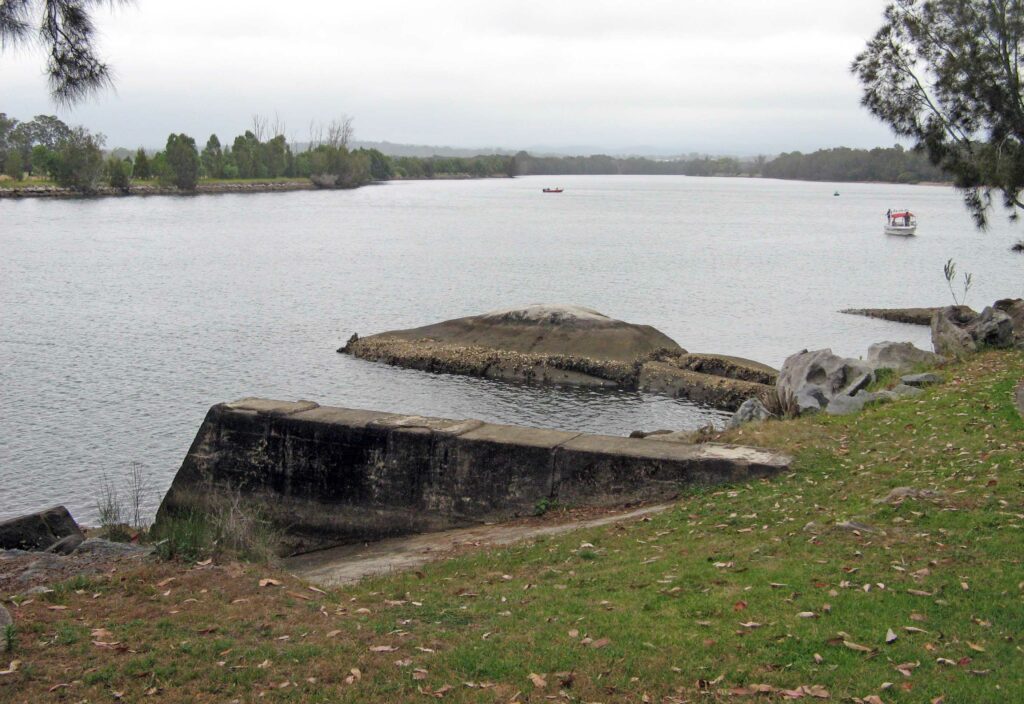
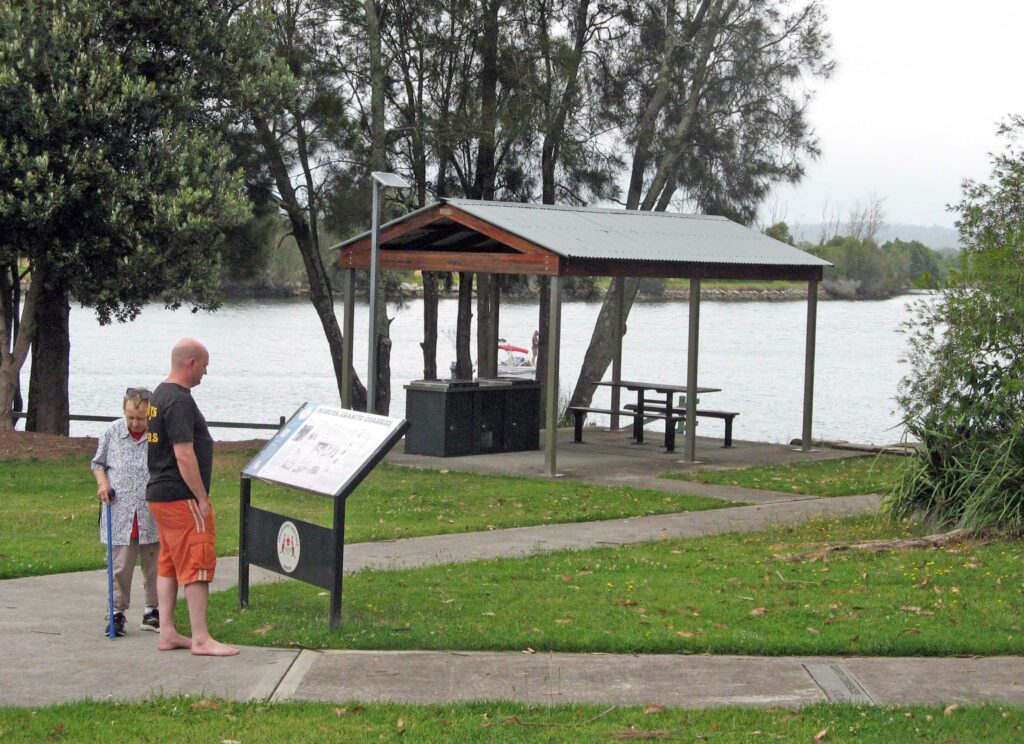
References
Ross, J., 1866. Letter to the Editor from John Ross. The Empire newspaper, 9 August 1866, p5. https://trove.nla.gov.au/newspaper/title/67
Jurmann, J., 2019. Set in Stone: Moruya’s place in the history of NSW. Moruya and District Historical Society Inc., 36 pp. https://mdhs.org.au/pdfs/Set_in_Stone_Flyer.pdf
Gibson, J., Clarke, M., & Renwick, S., 2010. A nomination for the recognition of Moruya Granite Quarry Complex & Granite Town as significant engineering heritage sites. Presented to the Engineering Heritage Committee of Engineers Australia. Heritage Consulting, 42 pp. https://portal.engineersaustralia.org.au/system/files/engineering-heritage-australia/nomination-title/HRP.Moruya%20Granite%20Quarries.Nomination.April%202016.pdf
Yuin Moruya Community (n.d.). Moruya Granite Quarry. Yuin Moruya Community Storylines site. Retrieved 11 May 2023 from https://moruya.storylines.com.au/2015/06/15/moruya-granite-quarry/


